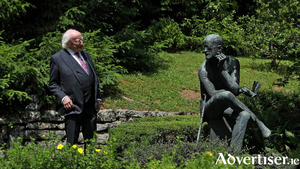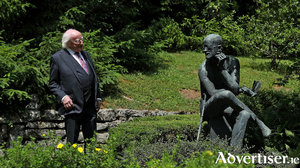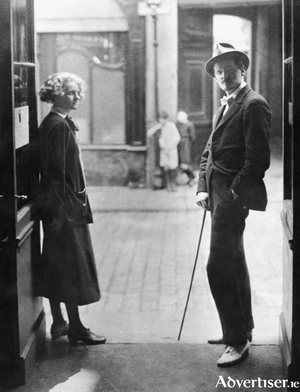Search Results for 'St Andrews Hospital'
4 results found.
A visit to Fluntern Cemetery

On a late August afternoon my friend John Hill drove me across the city of Zurich, climbing the suburban heights until we stopped at the gates of Fluntern Cemetery. We walked up the last incline to where, among the trees and billard-table lawns, we saw the Joyces’ grave. There was no mistaking it. Just above the grave is the Giacometti-like sculpture of the writer himself, the work of American artist Milton Hebald. There James Joyce sits, in characteristic pose, deep in conversation, head tilted, one leg resting on the other knee, cigarette poised, his slim cane delicately balanced. Someone once remarked that he held his cane like a musical instrument.
‘My dear little runaway Nora..’

Like all widows Nora had barely time to grieve. There was so much to be done. Both she and Giorgio and her grandson Stephen, were in a state of shock at Joyce’s sudden death. Joyce suffered indifferent health all his adult life, and endured a series of painful eye operations which had little effect on his looming blindness.
‘That Mr James Joyce is a man of genius’

Returning to Paris after an unsuccessful and troublesome visit to Galway in April 1922, Nora and her two children, Georgio (17) and Lucia (15) became aware that fame had come to the Joyces. Three months after its publication, Ulysses was recognised as a work of genius.
The long journey from Bowling Green was over

The Joyces finally arrived in Zurich on 17 December 1940 exhausted after weeks of torturous negotiations with the German, Vichy-French and Swiss authorities. They had sought refuge in Switzerland during World War I, now they hoped to do so again. To add to the stress of it all they had to leave their daughter Lucia behind in a psychiatric hospital in Brittany which was behind German lines. Joyce hoped that once settled in Zurich he could use all the influence he could muster to have her follow them to safety.

